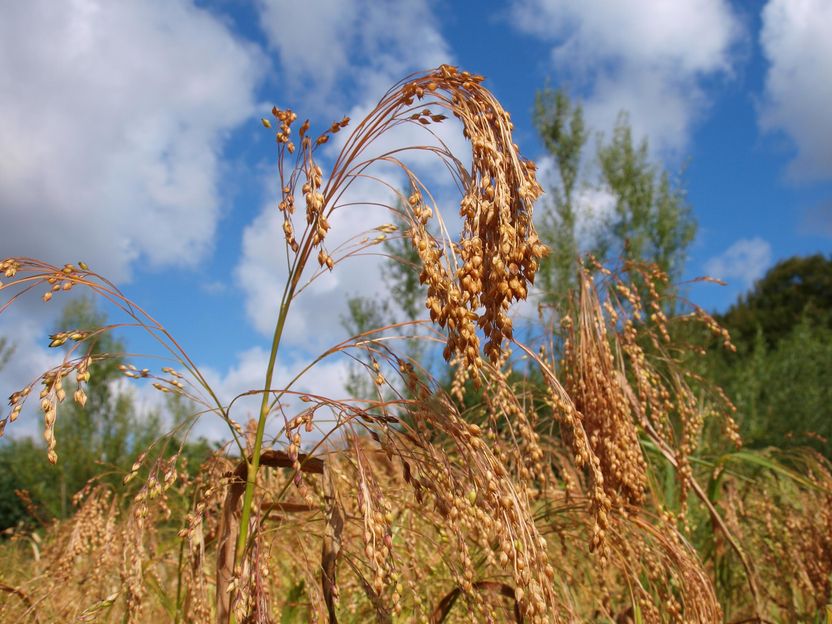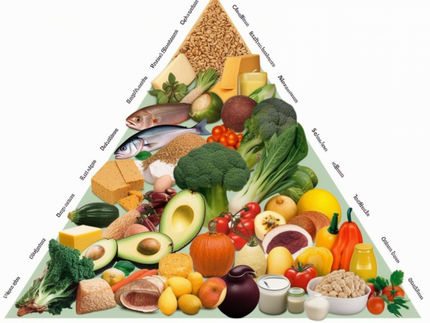Millet in the Bronze Age: A Superfood conquers the World
A research team at Kiel University has reconstructed in detail the spread of the grain from East Asia to Central Europe
Advertisement
People were already living in a globalised world 3,500 years ago. That is the conclusion of researchers at Kiel University (CAU). They have been able to reconstruct the spread of broomcorn millet in detail and found out that the grain was already spread from Asia to Central Europe at that time.

Broomcorn millet shortly before harvest.
Wiebke Kirleis
Easy to farm, short growing season and drought resistant: Broomcorn millet (Panicum miliaceum) is one of the most valuable crops for the world's food supply today. The people of the Bronze Age already appreciated these advantages - almost all over the world. A team led by Professor Wiebke Kirleis, deputy spokesperson of Collaborative Research Centre (CRC) 1266 "Dimensions of Transformation" at Kiel University, has discovered this. The research on "Human-Environment Interactions in Prehistoric and Archaic Societies" at the Institute of Pre- and Protohistoric Archaeology is published in the recently edited volume "Millet and What Else? The Wider Context of the Adoption of Millet Cultivation in Europe".
The advantages of millet: Today and then
This volume on the prehistoric spread of millet is breaking news, providing historical context for a recently rediscovered cereal. Not without reason did the Food and Agriculture Organization of the United Nations (FAO) designate 2023 as the "International Year of Millet". In times of increasing global warming, millets, as drought-resistant cereals, are supposed to secure food for the population when other cereals fail.
Due to its short growing period of only three months, it can be used as a failure crop in northern Europe when late frosts have destroyed other cereals. It is also easy to store. The small grains are tightly packed in hulls, which protects them from insects and fungus. Millet is also easier to prepare than other grains. It does not need to be cooked for a long time, but can be prepared by soaking it in a leather bag or a bowl of hot water. This makes it a "superfood to go" - for mobile nomadic riders as well as for sedentary farmers.
Globalisation in the Bronze Age
These advantages led to a spread of broomcorn millet that is without parallel. "The resistance of millet convinced people worldwide at that time. After many years of domestication in China, it was spread westwards in the Bronze Age," says Dr Dragana Filipović, research associate at Institute of Pre- and Protohistoric Archaeology. "We were able to demonstrate that millet reached the northern Black Sea region around 1600 B.C. and the Po Valley in northern Italy around 1500. Around 1400 B.C. it crossed the Alps and around 1200 it finally reached northern Europe." Millet served as an important source of food security in much of Bronze Age Europe from the Bronze Age onwards.
"We can learn something fundamental from the globalisation of the Bronze Age," explains Professor Kirleis. "During the Bronze Age, the supply of bronze collapsed in the interim, but the metal was not essential for life. The grain, on the other hand, which was once imported via transregional networks, was grown by the people themselves in all regions. So the supply of millet remained secured."
Supraregional relations are of extraordinary importance, they trigger innovations and contribute to international understanding. However, the Bronze Age case studies with millet and with bronze illustrate the advantages of autarkic supply over complex trade chains. "The people of the Bronze Age lived in an interconnected world just like we do, but they were this important step ahead of us. They already knew that essential needs should be met with local options," Wiebke Kirleis continues. "This guarantees the basis for a good life."
Original publication
W. Kirleis, M. Dal Corso, D. Filipović 2022: Millet and what else? The Wider Context of the Adoption of Millet Cultivation in Europe. Scales of Transformations in Prehistoric and Archaic Societies, vol. 14. Sidestone Press (Leiden 2022).


























































